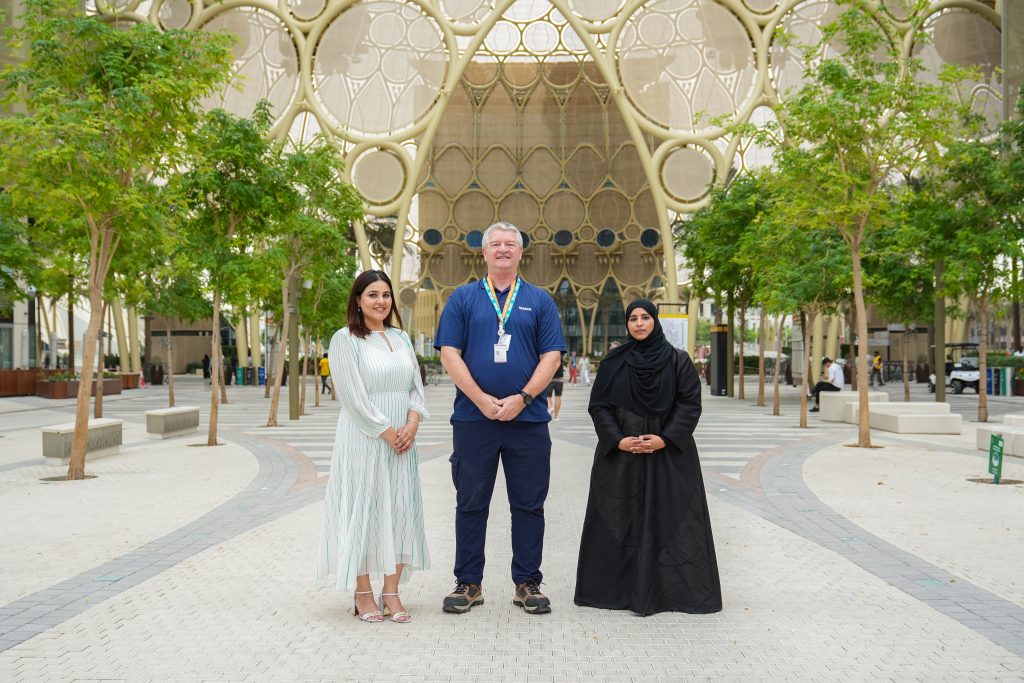COP28 (Conference of the Parties to the United Nations Framework Convention on Climate Change) is a crucial international event that gathers countries, governments, scientists, activists, and stakeholders from around the world to address pressing environmental challenges. Its significance, particularly in the context of sustainability and climate action, cannot be overstated.
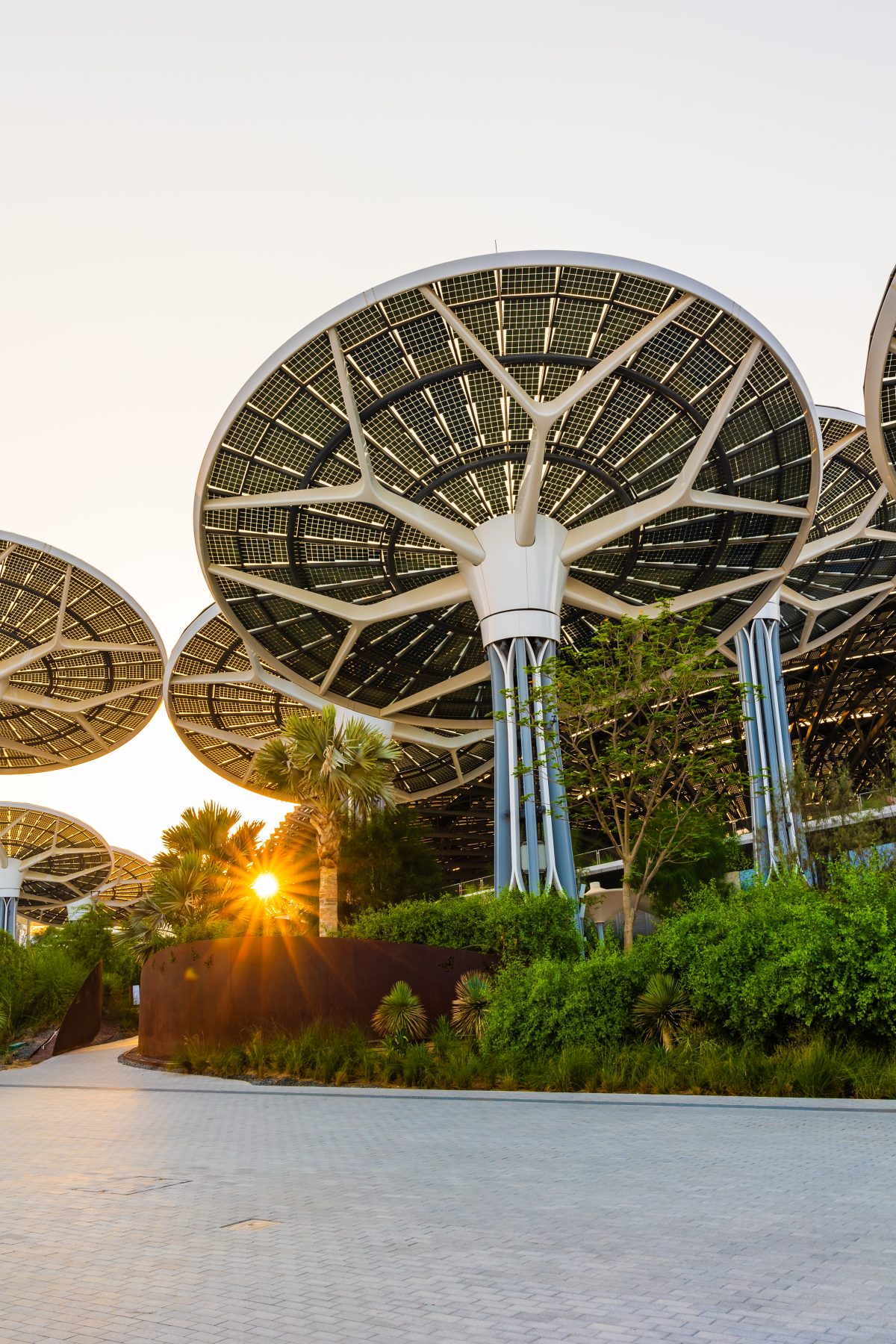
Markus Oberlin, CEO at Farnek, says that the event comes at a pivotal moment for climate action around the globe. He says: “Through international media reports, most of us are well aware of record global temperatures, as well as unprecedented wildfires, floods, storms and droughts worldwide.”
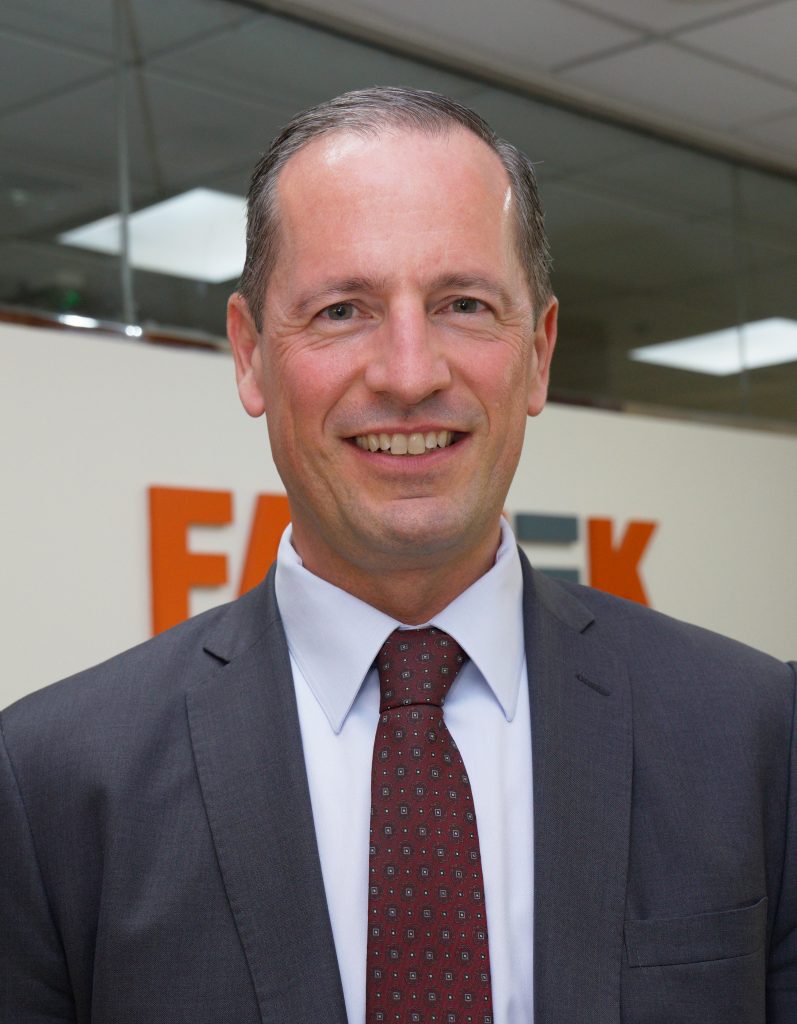
According to experts, such as Chatham House, the UN’s Global Stocktake synthesis report states much more must be done to meet the goals of the landmark Paris Agreement. COP28 presents a critical opportunity for governments to put the world on a more sustainable path.
Oberlin adds: “Vital issues facing negotiators will include implementing the loss and damage fund (established at COP27) and establishing a framework for the Paris Agreement’s global goal on adaptation (GGA). Other issues under the spotlight will include energy transition and food systems transformation, as well as climate finance.”
He says that COP28 is expected to have a significant influence on the UAE and Middle East FM industry. “As previously mentioned, COP28 will lead to increased global efforts to reduce carbon emissions and mitigate climate change. This will put pressure on facility managers to adopt sustainable practices within their buildings such as energy-efficient lighting, HVAC systems, and renewable energy sources.
“COP28 discussions often result in promoting green building standards and regulations such as LEED and Green Globe. Facility managers will need to be aware of these updated standards, to ensure that their buildings and processes are compliant. This may include retrofitting older structures to meet new sustainability requirements.
“It is also highly likely that the UAE will review its own net zero strategy still further, with new targets on an accelerated timeline. Facility managers will play a crucial role in helping organisations meet these revised targets by optimising their facilities for energy efficiency and reduced emissions.”
Oberlin believes that COP28 will focus on transitioning to cleaner energy sources, and facility managers may find themselves exploring opportunities for onsite renewable energy generation, such as solar panels. Facility managers will also need to implement effective waste management programs and encourage recycling within their facilities.
To that end, facility management is increasingly relying on data and technology to optimise building operations. “COP28’s influence may encourage the adoption of more advanced technologies for energy management, predictive maintenance, and sustainability monitoring.”
Farnek claims to be one of the first FM companies in the Middle East to unveil its roadmap to achieve net zero emissions by 2050, supporting the UAE’s strategic initiative.
Using 2021 as a brline, Farnek consultants identified the scope and boundaries, to accurately measure its carbon footprint. Apart from building performance such as energy and water consumption, Farnek also took into account, employee travel, logistics, purchased good and services, waste disposal, as well as focusing on recycling, renewables and other lower carbon alternatives.
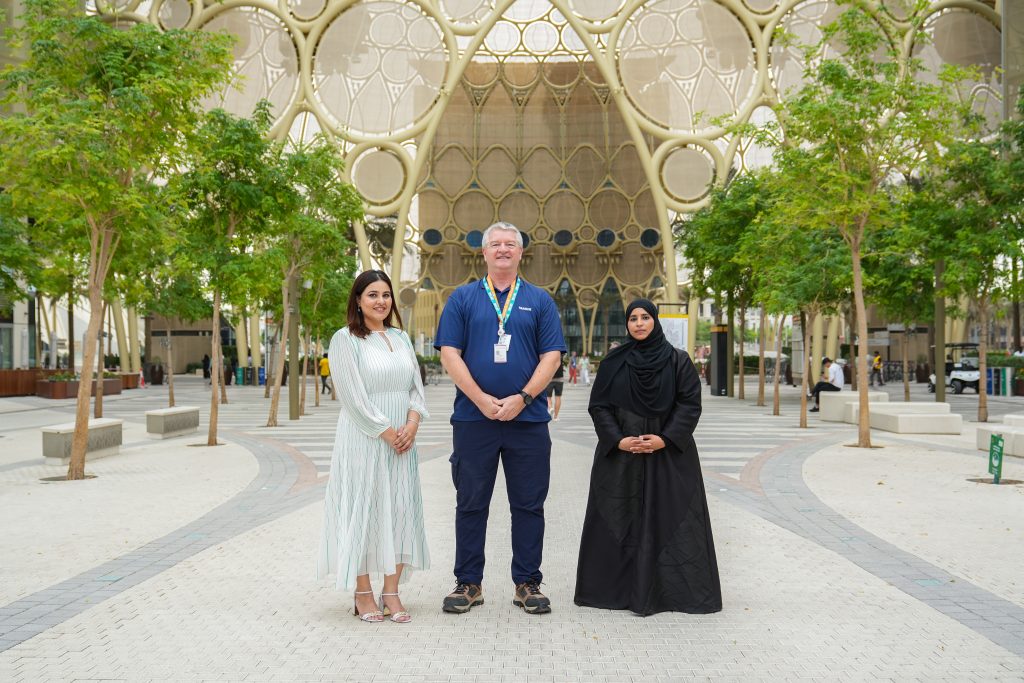
Emission targets were set for each category and applied an initial five-year reduction goal, which is reviewed annually to gauge progress, make adjustments if necessary and disclose the results to be transparent.
Oberlin says: “By the end of 2026, Farnek aims to reduce its electricity, water, refrigerants and fuel consumption by 30%. It will cut its waste by 10% and lower emissions associated with purchased good and services by 5%.”
By 2031, Farnek’s objective is to decrease its emissions in these categories by up to 50% and by 2048 its carbon footprint will have been cut by up to 90% overall.
Oberlin says: “Of course, it is impossible to become carbon neutral by reduction methods alone, so the remaining 10% will be offset by supporting certified carbon offset projects, thereby achieving its net zero target by 2050.”
Talking about Farnek’s energy management solutions, Oberlin says that the firm’s online remote digital platform PowerTEK, was developed by inhouse experts, at Farnek’s innovative digital solutions sister company HITEK.
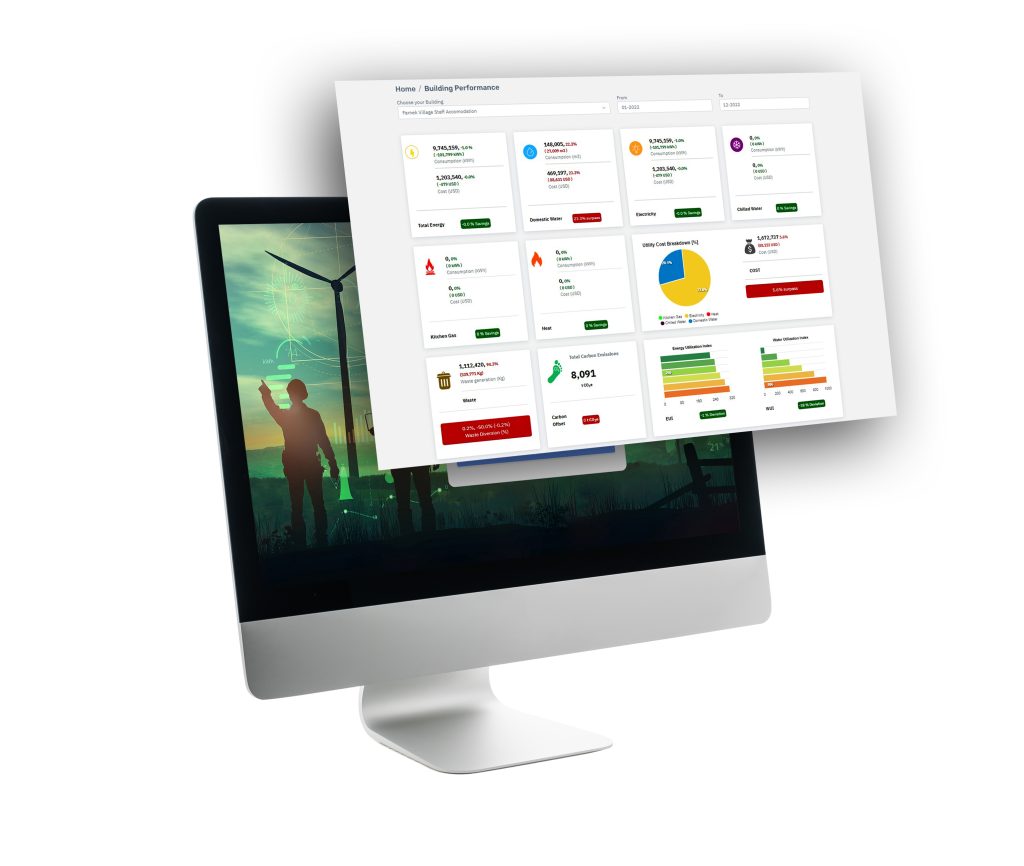
PowerTEK is an AI and ML-brd intelligent energy analytical platform brd on energy, waste, carbon statistics and KPIs, fed by live and historical data from IoT, BMS and even manual upload.
PowerTEK supports building owners and managers, through efficient measuring, tracking, monitoring and benchmarking of energy and water consumption as well as waste management. It analyses consumption and waste, with respect to multiple variables that can influence a building’s environmental metrics, which helps to maintain higher operational efficiency and lowering costs. Moreover, the analysis helps to reduce carbon emissions, which are key to navigating any roadmap towards net zero.
Additionally, CarbonTek is a dedicated online carbon footprint calculation tool, which can measure and analyse carbon emissions and identify carbon emission hotspots. The online tool caters to any type of business and has the flexibility to adapt to any operational activity. Developed by Farnek’s inhouse carbon management experts, with support from software developers from sister company HITEK, the digital tool calculates carbon emissions across all three scopes of emissions (Scope 1, 2 and 3 emissions in accordance with Greenhouse Gas Protocol (GHG) – a widely used greenhouse gas accounting and reporting standard).
The online solution can also be customised to generate carbon emission reports for industry sectors such as hospitality, manufacturing, commercial offices and logistics, according to the type and scope of business operations, accommodating access from multiple users in multiple locations.
Farnek provides a five-step approach from assessment-to-communication throughout the whole process of the net zero journey – training about the net zero concept and climate change; carbon footprint calculation; identifying emissions hotspots and setting reduction targets; preparing a plan for decarbonisation; and finally, monitoring and communicating milestone achievements.
Talking about the challenges towards achieving net zero, Oberlin admits: “No one has truly cracked the code for achieving net-zero emissions. It’s a complex journey that demands a holistic approach, involving various aspects of an organisation and engaging multiple stakeholders. To tackle this challenge, we’ve developed an integrated approach that emphasises strategic planning, operational excellence, and collaboration. While setting targets is a crucial first step, the real challenge lies in turning those targets into concrete actions.”
He lists down the challenges:
- Understanding and managing emissions
At the core of Farnek’s journey lies the need for accurate emissions accounting and monitoring. Oberlin says: “Establishing the boundaries for our emissions footprint, acquiring reliable data, and employing the right calculation tools, which is why we developed our proprietary tool, Carbontek.” - Prioritisation amidst business growth
Maintaining a delicate equilibrium between Farnek’s carbon reduction efforts and its business growth remains an enduring challenge. He says: “Presently, we encounter a market that is not fully prepared, marked by constraints in standards, policies, and technology. Nevertheless, we persistently seek innovative solutions that advance our climate objectives without hindrance. “To address existing gaps in the market, we’ve taken the initiative to develop our own in-house technological solutions such as Powertek, which enables monitoring key carbon emissions on real time and monthly basis.” - Tailored client engagement
Clients vary in their understanding and priorities related to net-zero emissions. Some have no targets, while others require support in implementing carbon abatement projects. Farnek adapts its solutions to their needs, offering consultancy, guidance, and project implementation support.
Giving an example, Oberlin says: “We’ve been providing energy auditing and saving solutions to our clients. This year, we’ve even considered investing in a number of projects through a shared energy saving ESCO contract to facilitate the energy and emissions reduction for our clients. We see our clients as partners and work together to find the best model.” - Supplier engagement
A significant number of Farnek’s suppliers are currently unfamiliar with the concept of net zero emissions. To address this gap in awareness, the firm has launched the Green Supplier Award to motivate its suppliers towards adopting sustainable practices, with a particular focus on net zero commitments and emissions reduction. In the future, Farnek plans to advance its green procurement criteria. - Staff education
Farnek’s staff play a very important role in achieving its net zero targets. The firm has made substantial investment in training and educating its staff, motivating them to embrace sustainable practices. - Community involvement
Oberlin says: “Acknowledging that the journey to net zero requires collective effort, we are deeply involved in climate dialogue, research, and advocacy. We collaborate with organisations such as the UN Global Compact Network, the UAE Alliance for Climate Action, Emirates Green Building Council, and Emirates Environmental Group. Our commitment extends to knowledge sharing, as we host webinars, events, and actively participate in summits and panel discussions to disseminate expertise and promote sustainability.”
Sharing success stories of projects where Farnek’s smart and green FM service has delivered outstanding results, Oberlin says: “Over 15 years ago, we established our sustainability division with a primary mission to assist our clients in achieving their own sustainability objectives. Initially focused on making our FM practices more sustainable, we later expanded our services to encompass sustainability consultancy and solutions. This includes energy management, carbon management, waste management, and green certifications like LEED and Green Globe. Our innovative solutions such as Hotel Optimizer, have benefited over 100 hotels across the Middle East and beyond.”
A standout example of Farnek’s work is the Burj Khalifa, where it has managed for the past decade, contributing to an annual energy reduction of 5% through energy focused operational approach. Despite the intricacies of this iconic building, Farnek also played a pivotal role as the primary LEED consultant, instrumental in Burj Khalifa’s LEED certification journey.
Farnek is also providing its green FM services for the Expo City and is supporting the client in achieving their sustainability and net zero goals while adhering to the international standards and the COP28 sustainability guidelines.
Talking about the future trends or innovations in the field of facilities management, Oberlin says that IoT will continue to play a significant role in facilities management. IoT sensors will monitor various aspects of building operations in real-time, including temperature, lighting, occupancy, and equipment status. This data will be used to optimise energy consumption, improve maintenance schedules, and enhance overall building performance.
Additionally, he says that AI and ML algorithms will be used to analyse data from IoT sensors and other sources to make predictive maintenance more efficient, optimise energy usage, and enhance security. AI-driven chatbots and virtual assistants may also help with occupant requests and building management.
Facility managers will also leverage data analytics to track and report on sustainability metrics. This will enable organisations to set and meet ambitious sustainability goals, reduce waste, and minimise carbon footprints.
Oberlin adds: “Predictive maintenance will become more precise through the use of AI and ML. Facility managers can predict equipment failures and conduct maintenance just in time, reducing downtime and repair costs.”
He also believes that organisations will increasingly seek sustainability certifications such as LEED to demonstrate their commitment to sustainable and healthy building practices.
Facility managers will also work to reduce waste and extend the life of building components through practices like recycling, refurbishing, and repurposing materials.
The other trends Oberlin says are Advanced Security Systems and Blockchain for Transparency. He elaborates: “Integrated security systems will continue to advance, incorporating biometrics, AI-driven surveillance, and access control to ensure both physical and data security, whereas blockchain technology may be used to increase transparency in procurement and supply chain management, ensuring the use of sustainable and ethical materials and services.”
In addition to these trends, including LEED, Farnek along with sister group company HITEK, is already working on AI, IoT, and blockchain to integrate further into its smart solutions.

